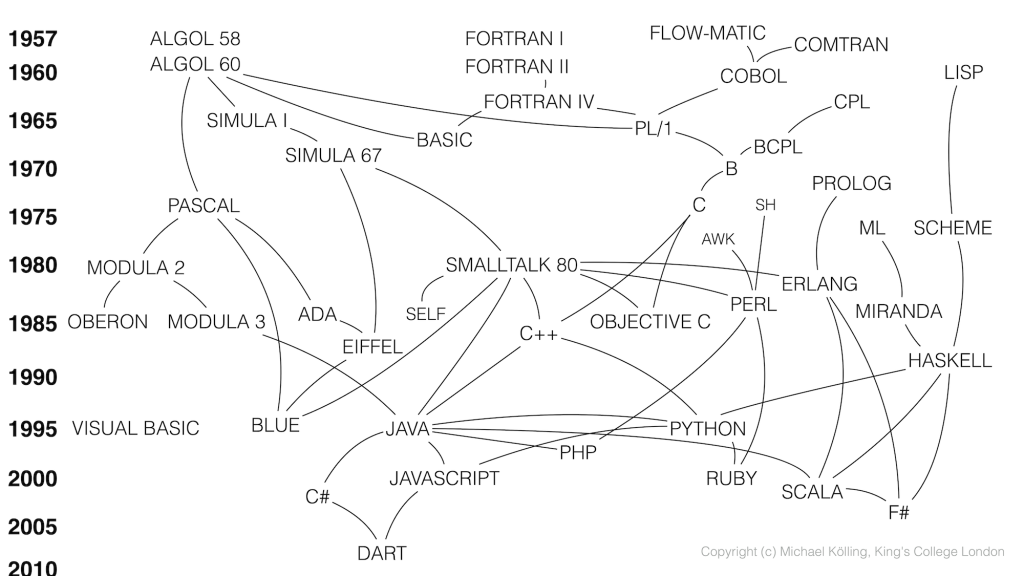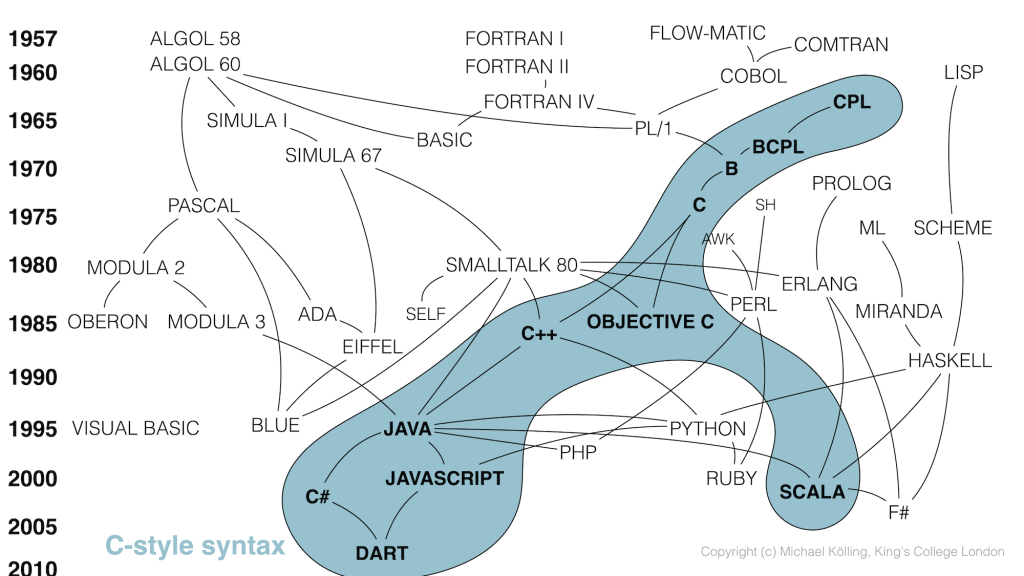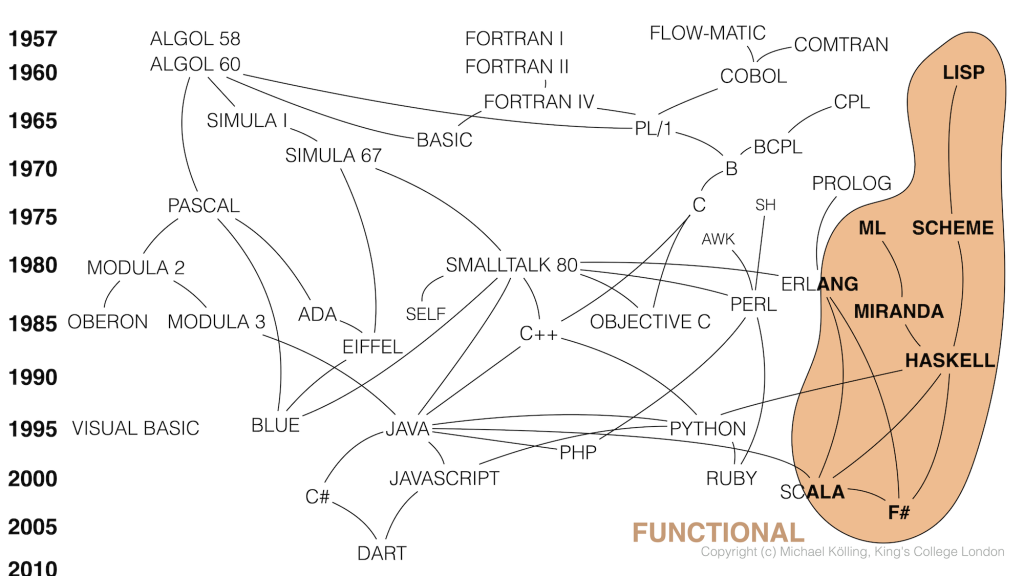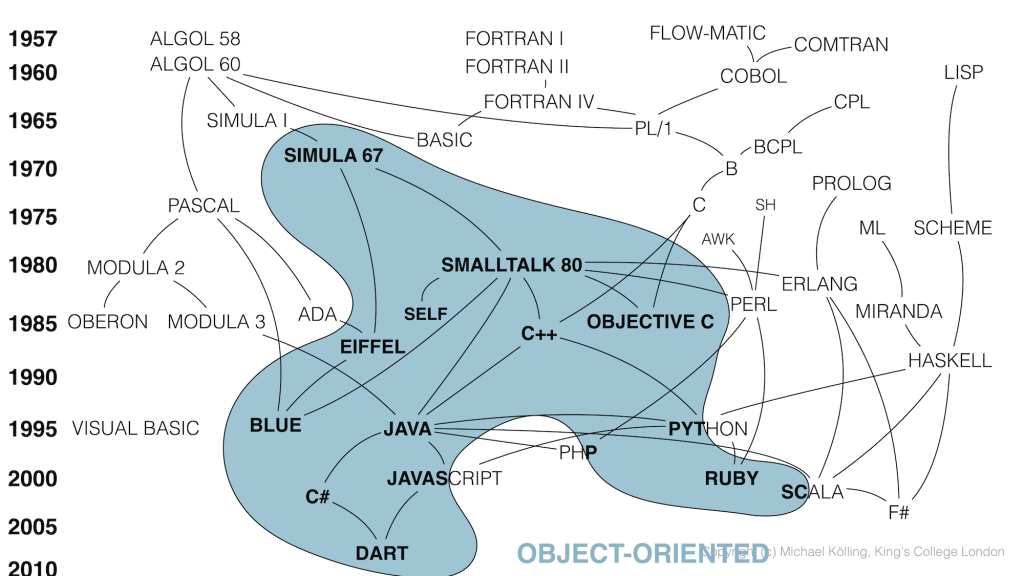While I was thinking about the history of programming languages recently, I remembered slides I once made, showing a (simplified) family/influence/history diagram of languages.
Shared he in case it’s useful to anyone.
(It was made many years ago, so not up to date after 2010 – sorry. And I fully expect your comments correcting my interpretations…)

Some programming languages and their relationships (up to 2010)

Languages with C-style syntax

Functional languages (some languages intentionally on the border…)

Object-oriented languages (some languages intentionally on the border)
Here is a PDF file with the same diagrams.

Nice. I’ve seen some much more complex ones than this, but it is useful nonetheless.
I think that it is a little misleading to position JavaScript so close to Java – it has little more in common with Java than with most other languages that use the C-derived syntax. Of more significance, I believe, is the – missing – connection between Self and JavaScript. JavaScript’s unusual approach to OOP – based on the concept of ‘prototypes’ rather than classes came straight from Self.
I remember David Ungar (Self) speaking at OOPSLA in 2002 (or thereabouts). He said that the mistake he had made with Self was that he had used square brackets – no realising that the future lay in curly brackets. (It was definitely tongue-in-cheek – he has a very dry sense of humour).